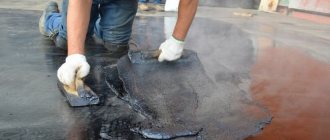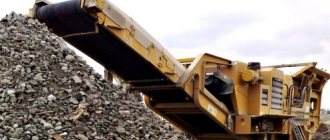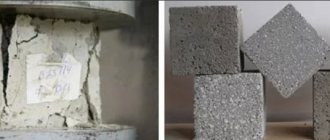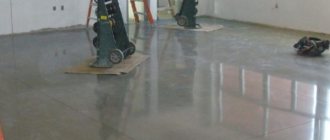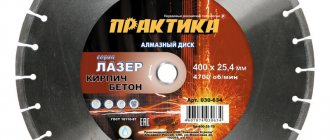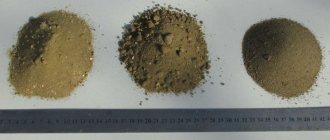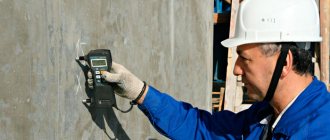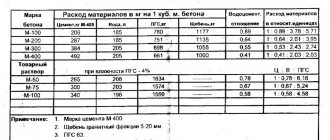The data presented below is selected from the annual reports of the European Ready Mixed Concrete Organization (ERMCO) for the years 2005-2013. ERMCO is a federation of national concrete organizations and includes 21 full members (From the EU - Austria, Belgium, Czech Republic, Denmark, Finland, France, Germany, Greece, Ireland, Italy, Netherlands, Poland, Portugal, Slovakia, Spain, Sweden, UK ; plus Israel, Norway, Switzerland and Turkey), 3 associate members (associations of South America, USA and India) and 1 corresponding member (Russia, represented by NIIZhB).
Research on the concrete industries of countries as a whole
These studies provide data for both ERMCO members and other concrete producers in these countries.
Volume of concrete production, million m3
| State | 2007 | 2008 | 2009 | 2010 | 2011 | 2012 | 2013 | Comments |
| USA | 315 | 270 | 243 | 197 | 203 | 225 | 230 | volume drop by 30% over 3 years (345 million m3 in 2006), gradual recovery |
| Japan | — | 101 | 96 | 85 | 88 | 92 | 99 | |
| Türkiye | 74,4 | 69,6 | 66,4 | 79,7 | 90 | 93 | 102 | Thanks to high growth rates, production in Turkey has exceeded production in Japan |
| Italy | 75,2 | 73,2 | 58,8 | 54,4 | 51,8 | 39,9 | 31,7 | drop by more than 2 times in 5 years |
| Spain | 95,3 | 69 | 49 | 39,1 | 30,8 | 21,6 | 16,3 | drop 6 times in 6 years |
| Russia* | 38 | 52 | 45 | 40 | 40 | 42 | 44 | biggest increase in 2008 |
| Germany | 40,8 | 41 | 37,7 | 42 | 48 | 46 | 45,6 | growth 2010-11 was replaced by a fall in 2012-13. |
| France | 45 | 44,1 | 37 | 37,4 | 41,3 | 38,9 | 38,6 | slight drop in 2012-2013. |
* — approximate data.
- Unfortunately, charts may not display correctly on small screens.
The world leader in concrete production is China - back in 2006, production volume was 430 million m3, and since then it has only increased.
| State | Volume, million m3/g | Population, million people | Volume per person, m3/g |
| Israel | 14 | 8,1 | 1,7 |
| Switzerland | 12,0 | 8,0 | 1,5 |
| … | … | … | … |
| USA | 230 | 302* | 0,67 |
| … | … | … | … |
| Russia | 44 | 141,9 | 0,31 |
| Great Britain | 19,6 | 63,9 | 0,306 |
| Portugal | 2,7 | 10,6 | 0,25 |
Russia ranks 3rd from the bottom in concrete production per capita. As a result of recent years, Portugal has fallen to the bottom of the ranking, displacing the UK.
Concrete classes
The study provides data on the popularity of various classes of mixtures in different countries, but given the very large discrepancy between the data in the studies for 2010 and 2011, there is a suspicion that the data presented in them is unreliable.
Mobility of concrete
The mobility in the study is also divided into 4 groups: low (P1), medium (P2-P3), high (from P4) and ultra-high (self-compacting concrete).
- The mobility of P1 is poorly distributed; among all countries, the most popular are the same places where the low brands are: the Czech Republic (21% each) and Ireland (17% each). It can be concluded that these countries have the largest share of road construction (low grade and low mobility) in the total volume of concrete produced. In Slovakia, the share of P1 concrete decreased by 3 times from 18% to 6%, and the share of low grades remained at 17%.
- Medium mobility (P2, P3) is the most popular in most countries (55% on average for all countries), among the leaders in production - in Germany (77%) and France (69%).
- High mobility (P4, P5) is common in Israel (95%), Spain (92%), Italy (88%), Turkey (58%). As data for Russia, NIIZHB provided a figure of 80% of fills using a mixture of mobility P4 and P5,
- A high proportion of self-compacting concrete (SCC) is in Denmark (30%). In other countries it is not widespread: 4% each in Norway and Japan, in other countries less than 3% (data for Sweden, where the share of SMS was 7%, is not provided),
- The study does not provide data for the United States.
- Unfortunately, charts may not display correctly on small screens.
- Unfortunately, charts may not display correctly on small screens.
From the history of the invention of concrete
The word “concrete” itself is of French origin; it was first used in the 18th century in France. Before this, water-cement mortar was called differently. Cast masonry with a stone filler was called the Greek word “emplekton”. The ancient Romans called concrete "rudus". When denoting such concepts as mortar for constructing foundations and walls, the phrase “opus caementum” was used. It was under this name that Roman concrete became known. The very first concrete discovered by archaeologists dates back to 5600 BC. e. It was found in the village of Lapinski Vir in the former Yugoslavia, in one of the huts of an ancient Stone Age settlement, where it was used to make a 25 cm thick floor. The concrete mortar for this floor was prepared using gravel and local reddish lime. In Egypt, concrete dating back to 950 BC was discovered in the tomb of Tewe. e. In addition, concrete was used in the construction of the galleries of the Egyptian pyramids and the monolithic vault of the Pyramid of Nîmes. In Ancient Rome, concrete was used as a building material around the 4th century. BC e. The material was called “Roman concrete” and was used approximately throughout the 7th century. Centuries have passed since then, but structures built from Roman concrete have survived to this day. Some of them, such as the Roman Pantheon, have survived several fairly large earthquakes. Foundation work in ancient Rome was greatly facilitated by the fact that the volcanic soil in its vicinity remained dense for quite a long time, which made it possible to use the most common plank formwork for the construction of foundations. Studies of ancient settlements have shown that two types of concrete were used for construction - artificial and natural. Natural was made from stones formed from clastic rock particles and bound together by various minerals, such as lime, gypsum or calcite. Natural concrete includes breccia, conglomerate and sandstone. When man came up with artificial concrete, the same stones began to be bonded together with other substances - gypsum, clay. The simplest type of concrete is clay concrete, consisting of a hard, stone-like material made from a mixture of clay, sand and straw. It gains sufficient strength after drying in the sun. Gypsum concrete is concrete made with gypsum binders produced from semi-aqueous or anhydrous calcium sulfate. Artificial concrete was not widely used in ancient times because it did not have sufficient strength: clay, lime and gypsum were soaked under water, and the structure was destroyed. That is why ancient builders preferred to use natural materials. But attempts to create an artificial binder material continued. The ancient Romans noticed that lime mixed with so-called pozzolanic (the name comes from the area of Puzziuoli near Naples) additives, on the contrary, acquired even greater hardness from exposure to water. This type of lime is called hydraulic lime. O. Choitre, a famous architectural historian, was able to reconstruct the process of laying stone concrete. To prepare the solution, lime was mixed with pozzolanic additives. Then a thick layer of mortar was laid between the two facing walls, crushed crushed stone with a grain size of up to 8 cm was laid on top. At the next stage, the mortar was compacted until it filled all the spaces between the crushed stone. The discovery by the Romans of the properties of pozzolanic additives improved the quality of Roman concrete, which could not but contribute to its further spread. In the II century. n. e. The Romans developed and began to use new types of binders, for example Romancement, which made it possible to greatly improve the physical and mechanical characteristics of concrete structures under construction. After the fall of Rome, many of the secrets of the ancient architects were lost. Centuries later, the English architect John Smith noticed that when exposed to water, quicklime mixed with clay hardens. He added sand and stone slag to this composition and obtained a fairly strong substance, which he used in the construction of the foundation for the Eddystone Lighthouse. The properties of binding substances - clay and fatty earth, which acquired relative strength after mixing with water, also became known to man long ago. However, they did not provide sufficient strength. That is why in China, India and Egypt approximately 3 thousand years BC. e. Through heat treatment of raw materials, artificial binders were developed - gypsum and lime. In the 60s of the XIX century. French gardener Joseph Monier came up with the world's strongest tree tubs made of reinforced concrete. He simply rolled up a metal mesh and filled it with concrete. At that time, Monier did not even suspect that in the near future his invention would become the main material for the construction of most buildings, especially high-rise ones. Centuries passed, concrete began to be used in other industries that seemed far from construction, such as shipbuilding (in the first half of the 20th century, many river and sea vessels were built using reinforced concrete), aviation (manufacturing wings and fuselages of aircraft ), railway transport (railway cars and tank frames). The Americans went even further: they proposed building a concrete plant on the Moon with a system of specialized warehouses. To do this, it was supposed to deliver concrete and other necessary building materials from Earth, and the delivery itself would be carried out using specialized transport ships.
Country Study Based on ERMCO Membership Data
Concrete mixer trucks (ABS)
- “Our own” mixers are most often delivered to the USA (~98%), Denmark (86%), Turkey (~70%),
- Hired ABS are used in most of the leading producing countries: France (83%), Great Britain (80%), Germany (72%), Italy (67%) - in these countries the percentage of this type of delivery has been increasing over the years,
- Pickup is widely practiced in Belgium (26%) and the Czech Republic (21%).
- Unfortunately, charts may not display correctly on small screens.
Data on the volume of concrete mixer trucks also implausibly vary greatly between studies from different years, so these data are not presented here.
Using concrete pumps
47% of pours by ERMCO participants are carried out using concrete pumps. They account for the largest share in Finland (76%), Turkey and Norway (75% each). Taking into account the fact that the supply of concrete with mobility P4 and higher in these countries is 45% (Turkey), 48% (Finland) and 95% (Norway), it is clear that not all pump pours are carried out with P4 concrete. Japan (9617), USA (7500), Turkey (3300), Italy (2300), France (1800), Germany (1602) lead in the number of pumps among association members.
- Unfortunately, charts may not display correctly on small screens.
Original study
Portal about cement and concrete.
The history of the appearance of concrete
concrete
appeared , since the beginning of its origin goes back far into the mists of time. It is only obvious that it did not arise as we know it today, but, like most building materials, has gone through a long path of development.
Earliest concrete
, discovered by archaeologists, can be dated back to 5600 BC. e. It was found on the banks of the Danube in the village of Lapenski Vir (Yugoslavia) in one of the huts of an ancient Stone Age settlement, where a 25 cm thick floor was made from it. The concrete for this floor was prepared using gravel and reddish local lime, delivered upstream the river more than less than 400 km from the mining site.
The history of concrete is inextricably linked with the history of cement. The oldest binding substances used by man were clay and fatty earth, which, after mixing with water and drying, acquired some strength. The use of clay in construction dates back to approximately the 10th millennium BC. e. Mixtures such as mortars and concretes
, which in those Distant times were widely used in the construction of a wide variety of buildings and structures; starting from the simplest adobe (earth) houses to huge temples - ziggurats. The Roman writer and scientist Pliny the Elder (23-79 AD) in Natural History writes with admiration about the “molded” walls of such buildings he saw in Africa and Spain. “...They stand for centuries, not destroyed by either rain or fire, more durable than those made of rubble stone... In Spain,” he writes, “to this day there are watchtowers and towers of Hannibal made of clay, built on the tops of the mountains.” It was not for nothing that Pliny called such walls “molded”, since they were, in fact, made by compacting (molding) wet soil or clay with stone, laid between wooden formwork panels, and in this sense they were the prototype of modern monolithic concrete walls. As construction progressed and became more complex, the requirements for binders increased. It is believed that more than 3 thousand years BC. e. in Egypt, India and China, artificial binders began to be produced, such as gypsum, and later lime, which were obtained through moderate heat treatment of the raw materials. Along with the production of binders, the use of mortars and concretes expanded. Probably, the first steps in the development of concrete, in addition to floors, were the construction of trenches for the foundations of buildings, which were filled with pebbles or fragments of broken stone, then filled with a solution of clay, bitumen or lime with sand and turned over time into a dense and relatively strong mass.
Individual examples of binding small stones with mortars or the use of mortar with large aggregates were known in ancient times among the Egyptians, Babylonians, Phoenicians and Carthaginians. The earliest use of concrete in Egypt, discovered in the tomb of Tebes (Tewe), dates back to 1950 BC. e. According to Pliny the Elder, concrete was used in the construction of the galleries of the Egyptian labyrinth and the monolithic vault of the Pyramid of Nîmes long before our era. One of the first to use concrete
peoples inhabiting India and China. The great Chinese country, the construction of which began in 214 BC. e., built mainly from concrete. The preparation of concrete and the formation of walls from it consisted of the following. First, one part of the lime paste was thoroughly mixed with two parts of sand and gravel or sand, construction waste and earth. The resulting dry (very hard) concrete mixture with a small water content was laid in layers about 12 cm thick between wooden formwork panels and intensively compacted with wooden tampers. After such compaction, the surface of each layer was slightly moistened with water and the next concrete layer was laid on it. The process was repeated until the wall was completely erected. This construction method was quite widely used in China back in the 20s of our century in the construction of houses, schools, baths and pagodas. Peoples who lived on the islands of the Aegean Sea and in Asia Minor, starting from the 7th-6th centuries. BC e. used fatty lime solutions with hydraulic additives in the construction of individual buildings and hydraulic structures. In India Already in our time, well-preserved concrete “pressed” floors (IV-V centuries BC) were discovered in temples and palaces of the nobility. The art of concrete production gradually spread throughout the Eastern Mediterranean and by about 500 BC. e. reached Ancient Greece, where fine-grained lime concrete was used to cover walls, including adobe walls. The palaces of the kings Croesus (560-546 BC) and Attala were decorated in this way. Subsequently, concrete began to be used in the form of rubble masonry. The space between two rows of stone walls was filled with large stones and then filled with lime mortar. Vitruvius in his treatise described in some detail several types of such masonry.
It can be assumed that Roman concrete walls and other similar structures developed precisely from Greek rubble masonry by gradually expanding the rubble concrete core by reducing the thickness of the stone walls, which from the main element of the masonry gradually turned into a thin shell, playing an auxiliary, secondary role. The noticeable use of concrete on the territory of the ancient Roman state began around the end of the 4th century. BC e. and lasted about 700 years. During this time, in its development, as in a living organism, four important stages can be traced: birth, rapid growth, maturity and death of this material.
Thus, the origin of concrete, that is, its slow and gradual introduction into Roman construction practice, lasted more than two centuries (until the 1st century BC). The second stage, which lasted until the 2nd century. n. BC, was accompanied by an accelerated growth and widespread use of concrete construction throughout the Roman Empire and its surrounding countries. At the third stage (the period of so-called maturity), concrete developed less rapidly, but with a noticeable improvement in properties, manufacturing technology and the adoption of new design solutions. This was a stage of qualitative growth and development of great potential, which lasted from the beginning of the 2nd century. and until about the middle of the 3rd century. n. e. Finally, the final, fourth stage lasted less than a hundred years and ended at the beginning of the 4th century AD. e. The indicated division of the evolutionary development of Roman concrete into separate stages is quite arbitrary, but it allows us to schematically show the entire path that this material has traveled over the seven centuries of its existence.
Legend
For convenience, each of the listed characteristics has its own letter and number designation.
The letter “M” means strength and indicates the average technical properties of the material. The number following it indicates the maximum load that the composition can withstand. Measured in kgf/cm2. Value range: 50 to 1000. Indicates marcubeton.
The letter “B” and the number from 3.5 to 80 indicate the level of maximum compression strength that the concrete structure will withstand. Units of measurement: MPa (megapascals). Indicates the class of concrete.
The letter “W” together with an indicator from 2 to 20 determines the maximum allowable water pressure. It is measured in megapascals (MPa).
The designation “F” and a number from 50 to 300 indicate frost resistance, i.e. permissible number of freezing/defrosting cycles.
According to the ease of installation, the designation “C” (super-rigid), “Zh” (rigid) or “P” (movable) is assigned.
No concrete needed. GC "Etalon" suspended the operation of its concrete products plant
18409
Natalya Burkovskaya, Pavel Nikiforov
The concrete industry is most active in this regard. According to estimates by analysts of the Independent Investment Consulting Company in the building materials industry of Russia and the CIS countries (SM PRO), the production of ready-mixed concrete in the Russian Federation since the beginning of the year has increased by 9.1% compared to the same period last year and amounted to 13.6 million m3.
According to the city construction committee, in the first half of the year almost 595 thousand m2 of housing were delivered in St. Petersburg, which is 38% less than last year’s figures. If we compare it with the corresponding period in 2020, the difference will be even more significant - the volume of input decreased by almost 3 times. “However, consumption of ready-mixed concrete in the housing construction segment has increased by 10–12% over the past six months,” says Alexander Batushansky, general director of the Reshenie consulting group. He notes that the construction of building frames alone, excluding landscaping, takes about 2.8 million m3 of ready-mixed concrete and mortars per year. “This segment has seen 8% growth this year.”
In St. Petersburg today there are 59 producers of ready-mixed concrete - from large factories to mobile concrete mixing units. Five years ago their number was almost 3 times higher.
Among the well-known market players are GC “Beaton”, (LLC “Adamant SPb”), “LenBeton”, “Glavbeton”, etc.
One of the leading market players, LSR Group, in its published operating results for the first half of the year, along with an increase in the cost of new contracts and the average price of sold real estate, notes a decrease in the production of ready-mixed concrete in the first quarter of this year. At the same time, the indicators for the first half of the year generally show an increase: 4% more ready-mixed concrete was produced than a year earlier: 557 thousand m3 versus 537 thousand m3.
The price of concrete is also growing progressively every month, as are all other prices in Russia. “According to our observations, inflation is at least 20%, and not the 6% they talk about on TV,” complain the builders.
Digital construction. How digital modeling technologies will help builders New technologies
On lands that once belonged to Ancient Rome, many well-preserved buildings made of monolithic concrete have been found. The Romans mastered this technology so skillfully that they made not only massive blocks from concrete, but also columns, walls, vaults and even domes.
The method of constructing such domes, by the way, still raises many questions among scientists. Trajan's Market (2nd century AD) is also built from concrete, a multi-storey ancient Roman shopping complex that has been well preserved to this day.
Or, let's say, the Colosseum (late 1st century AD) - one of the greatest circuses of Ancient Rome. Constructed of concrete and lined with marble and brick, after the fall of Rome it was used as a fortress for centuries - and stood almost intact until the mid-14th century, when a strong earthquake finally noticeably damaged it. Enterprising townspeople took away the rubble and peeled away the cladding: many famous buildings of later Rome were built from Colosseum stone. But the main structure has been preserved, because the monolithic concrete poured into the formwork, try it, take it apart into pieces!
But in fact, like many other things, the ancient Romans borrowed the idea of concrete (a mixture of cement with a filler of small stones) and cement itself from even more ancient Greeks. For example, there is a well-preserved water tank in the ancient Greek city of Megara, the structures of which were coated with a layer of material that was very similar to cement.
And most importantly, by digging into this cement, we can already discover the very mysterious ingredient that later made ancient Roman buildings so strong. The composition of Greek cement included volcanic ash, which today has its own special name - “pozzolan”. It was mined then in the hills near the city of Puteoli (now Pozzuoli) in the area of the Vesuvius volcano.
In Ancient Rome, concrete with volcanic ash began to be used around the 2nd century BC. e., and very successfully. The mixtures included lime, pozzolan, volcanic tuff, pumice, sand and stones. The ancient Romans called their material rudus (Latin) or emplekton (Greek), and the binding solution opus caementum (the French word for concrete came into use only in the 18th century).
Several years ago, American scientists carefully examined the ancient Roman opus caementum, compared it with the modern composition and found out what the secret was. It turns out that pozzolan contains a lot of aluminum silicate (spoiler: modern concrete does not!). The sea water in which the concrete was mixed caused a hot chemical reaction in the solution - we will skip the long chemical details here - but as a result, a special mineral called aluminum tobermorite was formed inside the mixture, which gave the concrete special strength.
It is especially interesting to observe this chemical process on offshore structures. For example, here is the harbor of Herod the Great in Caesarea (1st century BC), created with the help of Roman construction technologies - a port and a complex of protective marine structures, the material of which became the subject of research. The concrete breakwaters and piers of Caesarea have been continuously washed by sea waves for almost two thousand years, partially going under water. The reaction went on and on, the formation of Al-tobermorite in the concrete monolith slowly continued for years, tens, hundreds of years... Maybe it is still going on. The concrete of the port structures became stronger and stronger, and now only our distant descendants will be able to say how many more millennia these ruins will stand.
Roman builders knew many ways to use concrete, but they also introduced the standardization of the composition of concrete mixtures - the Romans, with their characteristic pedantry, standardized many technologies, which made many achievements of Roman civilization very durable, but this is a separate interesting story.
So, thanks to a successful chemical composition and compliance with standards, ancient Roman concrete turned out to be more durable and reliable than modern one. The durability of concrete in buildings built today is designed to last approximately 100-120 years. But Roman buildings have already lasted two thousand years - and will outlive you and me!
© Ekaterina Livanova
total views 217, views today 1
When was concrete invented?
People learned how to do it a long time ago. Some Egyptologists suggest that most of the huge pyramids are nothing more than artificial stone, the oldest concrete in human history. The pyramids of Ancient Egypt, the huge majestic structures of Ancient Rome and the colossal skyscrapers of glass and concrete were created from the same material. How many of them have been produced over time? Billions of tons? Trillions of tons?
I will say right away that although modern skyscrapers are called “colossi of glass and concrete,” their supporting frame is made of steel. And then they fill the floors and walls with concrete and decorate it all with glass. All the same, concrete, in one form or another, is an absolutely necessary part of modern construction. And this has been true for many decades, not to say centuries.
The recipe for the first concrete was discovered 5-6 thousand years ago, when people discovered that if you strongly burn some rocks, grind them into dust, and then mix them with gravel and add the required amount of water, you get a viscous mass that dries in air within several days, after which an artificial stone is obtained. If you pour it into the mold before it hardens, immediately after adding water and mixing well, you get a stone of the desired shape or a good piece of wall.
The legendary Labyrinth of Ancient Egypt had concrete walls cast 3600 BC. The oldest buildings in Mexico, some parts of the Great Wall of China, the ancient Roman Pantheon are made of concrete...
Pantheon in Rome, Italy Photo: Depositphotos
In Ancient Rome the so-called pozzolana cement. Deposits of binder in ancient Rome were mined on the hills near Vesuvius, near the town of Puteola. We translated the word as pozzolana, although the Italians themselves call it pozzolana.
Lyrical digression on the topic. Do you think the difference between puzzo and pozzo is just one letter? The Italian language has many faces. The words pazzo, pezzo, puzzo and pozzo (pazzo-pezzo-puzzo and pozzo) differ in just one letter, but have completely different meanings, because they are translated (sequentially) as - crazy, piece, stench and well. Great and powerful is the Italian language!
But let's return to concrete.
Many aqueducts in the Roman Empire were built from this pozzolana concrete; in cities, multi-story houses for the plebs were made of concrete. There is no need to cut stone from a quarry and transport it tens or hundreds of kilometers to the construction site. Bring pozzolana cement and small stones, add water from the river, mix well, and pour into the mold. A few days later, the next part of the wall is ready. Over several centuries, many objects were built on the territory of the Empire using pozzolana concrete.
When the Empire died, many discoveries were forgotten for centuries. Concrete was remembered in the 17th century. In England, various port facilities were then actively expanded. And waterproof cement turned out to be very useful. In England, limestone was burned with clay admixtures to produce a water-resistant binder. Such concrete hardened even when immersed in water.
Limestone quarry on the Isle of Portland, England Photo: Wilson44691, ru.wikipedia.org
The 19th century was the beginning of the cement era. Factories were built all over the world, and houses were built in many cities. Various types of cements were invented, reinforced concrete was invented - and it began...
Construction has become much more technologically advanced. There is no need to break out stones in quarries, which then need to be cut into the correct shape and brought, perhaps many tens of kilometers from the quarry, to the construction site. Instead, you can use artificial stone, which hardens directly in place in the wall.
Or simply a floor wall, poured in one go, hardened in a day or two, allowing in a few days to place equipment on the newly created floor that will allow the next floor to be poured. And so - floor after floor, week after week, reinforced concrete buildings grow. Just know, bring cement and gravel by car, and you can get water from the tap.
M. S. Saryan, “Workers’ village and cement plant in Davalu” Photo: artchive.ru
Since the beginning of the 60s, the USSR occupied first place in the world in cement production. Now Russia is in 5th place. And China ranks first in cement production.
Nowadays, dozens of different types of cements have been created.
There are cements that set and harden very quickly.
There are cements that are waterproof and even have water-repellent properties.
If cements are resistant to highly mineralized waters.
Asphalt cement covers streets where houses are made of concrete.
The filling on the tooth is cement!
If the underwater part of a ship is damaged at sea, the emergency team places a cement patch on the hole, which stops the leak, and the concrete patch allows the ship to travel a long distance at sea, reaching the port where the hole will need to be welded.
Even science fiction writers, in the distant future, have repair robots repairing damaged steam lines or ship hulls pierced by meteorites with nothing more than “plastic cement.”
Gray powder, ubiquitous and staining everything during repairs or construction - invisible, not famous and irreplaceable.
Perhaps our era should be called the era of cement. How would we get by if he didn't exist?
What else to read on the topic?
Emeralds and “artificial” emeralds. Diamonds and “artificial” diamonds. What's more expensive? When was asphalt invented? Why is concrete stamped?
Tags: artificial stone, concrete, history of invention
Prospects for the development of new types of concrete in the Russian Federation
Since its invention, concrete has become one of the main building materials used in construction. Eugene Frisinnet, having invented it, gave impetus to the development of the science of concrete science, which continues to develop to this day. Truly the main building material of the 20th century, concrete, and even more so its variety - reinforced concrete, thanks to its unique properties, occupies a leading position in the construction market and is constantly expanding its presence in various types of building structures. Thanks to its properties, it is able to replace not only expensive metal, but also other materials in many structures.
For example, to produce one ton of steel, it is necessary to process 20 tons of primary resources, of which 19 tons - in the form of waste - are returned to the environment. In turn, concrete production can be completely waste-free, and in most cases serve as a way to recycle waste from other industries. At the same time, studies have shown that some environmentally hazardous industrial wastes are neutralized in concrete, which is an important circumstance [2].
Around the world, it is the science of concrete that is experiencing an innovative impulse. Initially, concrete was a five-component system. Gradually it turned into a 6-component one: cement, fillers (sand and crushed stone), water, additives and air. We need to control all parameters, and especially two elements: air and water. Behind each of the above components are entire industries. Being a composite, concrete has absorbed and is absorbing something new and innovative from each of these industries as they develop. It is clear that if industries do not develop, then the final product—concrete—loses.
Currently, about 5 billion cubic meters are used on construction sites around the world. m of both ready-mixed concrete and reinforced concrete, and these volumes are constantly growing. At this point in time, the market is experiencing some stagnation. First of all, this is due to the economic crisis. Nevertheless, concrete remains the leader in use, and this is due to its availability as a material and the presence of a number of factors: - good physical and mechanical properties that satisfy as a structural material in the construction of a wide variety of buildings and structures - from civil purposes to dams and hydraulic structures ; — unlimited architectural possibilities, especially recently, with the advent of self-compacting concrete and concrete with new types of reinforcement; - materials of secondary origin and recycling can be used as raw materials for the preparation of concrete, materials of local production can also be used; — fairly low energy intensity of the starting materials, which applies to both the new cement production technology and the general production technology in general; — high environmental and economic indicators of the production and use of concrete and reinforced concrete (compared to other interchangeable materials).
Thanks to all of these advantages, concrete, in terms of durability and operational reliability, should replace natural stone, wood and steel.
This requires not only favorable operating conditions, but also the correct use of certain types of concrete in appropriate structures, and then the concrete will serve us forever.
The above also proves that in the last, twentieth century, more than 21 billion cubic meters were used in Russia alone. m of concrete and reinforced concrete. Its production required more than 70% of all cement produced and 30% of non-metallic building materials.
In value terms, concrete and reinforced concrete account for about 60% of the cost of all materials used in construction. This industry employs approximately 400 thousand workers, and the share of production is 2% of the total gross product of the Russian Federation (the entire building materials industry is 3%). Thus, the efficiency of the concrete and reinforced concrete production industry largely determines the level of the entire building materials industry [ 1].
In the current situation, there is a lag of this industry, as well as the country as a whole, behind developed countries by 30 years. Russian concrete science is currently at a low, weak level. Only due to old data, the knowledge of our luminaries and enthusiasts, we have many solutions and inventions. Unfortunately, incompetent people are also trying to touch upon the issues of concrete production and production, whose actions raise certain doubts, but, nevertheless, even from them one can find a sound grain that can serve progress.
However, in our country, in terms of technical and economic indicators, in the near future concrete and reinforced concrete will continue to remain the main structural materials, occupying priority places in the overall structure of global production of construction products. The continued use of concrete and reinforced concrete will make it possible to build durable, grandiose and unique objects and structures. According to experts, reinforced concrete will retain its leading role in construction in the current century.
Unfortunately, it is precisely the quality of concrete that raises a number of numerous questions. In my subjective opinion, we just need to establish the correct production of ready-mixed concrete. In the so-called “fat”, “hydrocarbon” years, many concrete plants proliferated in our country. The quality of their products could be constantly questioned; in the concrete they produced it was difficult to find either crushed stone or cement... It was in the nineties, when our cement industry switched to market conditions, prices should have fallen, competition would have become tougher, quality would have increased, but everything this began to have the opposite effect. In some regions, the market has been usurped, and the quality of domestic cements is much inferior to the quality of cements produced in Germany and Finland, so to speak, technologically developed countries.
Fundamentally, all parameters of the service life and durability of concrete are laid down at the first technological stage of production. How the composition is selected, whether all standards for the preparation and storage of inert materials and cement are met - all this will ultimately affect the final product.
The loud statements of some owners about rearmament turned out to be a farce, and then the crisis arrived. I don’t want to say that nothing is being done at all, but maybe there is a lack of investment, maybe there are lengthy approvals, but we are really far behind in this industry. But some entrepreneurs believe in a bright future and continue investing in the construction of new factories, despite the difficult economic situation.
Currently, the energy-intensive “wet” production method predominates in Russia, the share of which in the production of cement clinker is 87%, and in the production of cement - 85.6%. This type of production does not allow us to produce exactly that new segment of concrete that will meet all modern requirements of both high-rise and simple construction.
In the US cement industry, the share of “wet” production is about 40%, and in Germany, Spain, Italy, Japan and other countries with a developed cement industry, production is carried out exclusively by the energy-saving “dry” method, in which the specific fuel consumption is 100–115 kg . tons per ton of clinker, while the use of the “wet” method at Russian enterprises requires 218.7 kg of clinker. t. per ton of clinker. Agree, in the context of rising energy prices and on the eve of Russia's entry into the WTO, this is quite relevant.
Previously, cement enterprises experienced great difficulties due to significant seasonal fluctuations in the volume of cement supplies to consumers. Thanks to climate mitigation and global warming, as well as the use of modern production technologies, cement sales in the autumn-winter period do not actually decrease, but, on the contrary, even increase in some regions, although in previous years there was a seasonal reduction in consumption by 2-3 times.
Many Russian production facilities are indeed very outdated; due to constant demand, even they cannot carry out preventive work on timely repairs in a timely manner, not to mention total modernization.
A striking example is the shutdown for maintenance work at a plant in the town of Pikalevo, Leningrad Region, in the summer (in 2006). Concrete producers have virtually suffocated due to a shortage of cement. The largest enterprises in the construction industry in St. Petersburg began to produce concrete “a teaspoon per hour,” volumes fell sharply, prices crept up. Small concrete producers have become more active. Fortunately, recently the market has become saturated with new mortar units. But, excuse me, the quality of the concrete they produced sometimes simply did not correspond not only to visual control, but simply did not fall within any framework. And the question arises: how durable will the structures built from such concrete be?
Solving this problem requires government support. The future development of the cement industry should be planned in such main areas as: - technical re-equipment and reconstruction of factories in order to update fixed assets, bringing the share of the “dry” method of cement production to 80–85%; — development and implementation of highly efficient energy-saving technologies, meeting the needs of the construction complex in the range and construction and technical properties of cement; — wide involvement of production waste from related industries into economic circulation; — training and advanced training of production and scientific personnel; — reducing harmful emissions into the atmosphere and improving working conditions; — strengthening export potential; — preparing enterprises for the transition to using coal and industrial waste containing fuel as fuel; — re-equipment of the country’s machine-building base and organization of mass production of new generation cement equipment; — improving the location of cement production in the constituent entities of the Russian Federation.
Returning to the issue of the development of construction science and concrete science in particular, I would like to say that the lack of investment is, unfortunately, incomparable with achievements in other areas of science and technology. The main barrier to innovation in construction is the too high risks of investing in construction science and technology. This problem is relevant not only for Russia. According to some data (F. Yatymovich, USA), the average world expenditure on research and development is (as a percentage of sales in these areas).
These tables confirm the pattern of a noticeable lag between achievements in construction and the striking, literally revolutionary achievements in many other areas, for example, biotechnology, nanotechnology, information technology, etc. These data are averaged, and the development of Western science, of course, is at a different level . But it cannot be surprising that a modern super-tall and super-expensive building or a bridge with an unprecedented span, on the normal functioning of which the lives of a huge number of people often depend, during construction and operation are controlled by relatively primitive single control and monitoring systems, the cost of which is incomparable is small compared to the cost of the objects they control and the lives of people, and a modern car, which provides a comfortable and safe life for just one or several people, is crammed with control systems, the cost of which is comparable to the cost of the car itself.
Therefore, undoubtedly, when speaking about the service life of reinforced concrete structures, one cannot fail to mention the complexity and versatility of the problem, which, according to some well-known foreign experts, is often not solved entirely correctly. In this material I focused on the problem of producing cement binder. But many Western scientists (such as S. Rostam from Dani) believe that the search for ways to extend the service life of reinforced concrete only by researching and improving the properties of concrete and reinforcing steel is not very productive, although it is of some interest. The problem should be solved comprehensively. Improving the properties of both materials and their optimization should be carried out taking into account their properties in dynamics and taking into account the essence of the processes occurring in the structure under the influence of the environment.
Many scientific centers in Russia are currently working on concrete science issues. In St. Petersburg State Agrarian University and PSUPS, recently the St. Petersburg State Pedagogical University joined them. Graduates of these universities successfully work at many enterprises in the industry, closely mastering new types of concrete.
In our country, one of these promising developments can be called SCC (self-compacting concrete) or High Performance Concrete, although in the West over the past 15–20 years, concrete specialists have devoted a large amount of work to it. It was necessary to turn to the development of this topic primarily because of the issues of high-rise construction, the so-called High Performance Concrete, characterized by high density and low permeability. Their use has brought a noticeable effect in increasing the durability of concrete, however, in terms of protection against corrosion, such concretes have another drawback - a decrease in the amount of calcium hydroxides that are bound by pozzolanic additives.
The use of modern, self-compacting concrete, which, in addition to its main role of protecting reinforcement from corrosion, also plays a certain environmental role of protecting working personnel and others from vibration, and the environment from noise and dust. Due to its properties, the use of deep vibrators and formwork vibratory blocks on the construction site is excluded.
However, in both cases, the concrete formulation becomes significantly more complicated, and more advanced technology and qualified personnel are required to produce durable structures without flaws. But at the same time, the likelihood of technological errors with unpredictable consequences increases. And in this case, the quality of cement plays an important role.
In addition, one of the main purposes of concrete is to protect reinforcement from corrosion, therefore it is advisable to use impermeable and durable concrete, from a technical and economic point of view, only in a protective layer of concrete. To summarize the above, in general, design concepts for durability can be prescriptive and operational in nature. The former are based on material specifications (technical conditions), the latter are based on quantitative durability predictions obtained from full-scale tests and measured actual material characteristics.
In Europe, the current concrete standard EN 206 and the German standard DIN 1045-1, revised on its basis, are prescriptive. Designing for durability is about correctly identifying the class or application and selecting the right materials to meet those requirements (cover thickness and concrete treatment). In rare cases, for individual projects, proof of the frost resistance of concrete in the presence of anti-icing salts is required, sometimes confirmation of its water or gas impermeability. A number of European countries have developed their own performance specifications that are used in addition to the requirements set out in EN 206.
In our country and in many countries, some additional measures are used to increase the durability of reinforced concrete structures, including secondary protection of concrete, corrosion inhibitors, cathodic protection, corrosion-resistant and stainless steels, non-metallic reinforcement, etc.
In the Russian Federation, as a priority measure, it is necessary to establish the production of ordinary, but high-quality ready-mixed concrete. The fork in which manufacturers operate must be narrowed to meet standards. It is ordinary ready-mixed concrete that will be the main building material, and its share in the total production will be 70–80%.
As a promising direction and, probably, as mandatory for increasing the durability of concrete, fibers should be used. It is through the use of fibers that the crack resistance and reliability of concrete structures can be increased. These fibers can be made from basalt, polypropylene, cotton, or other materials. Undoubtedly, steel rod reinforcement will be used as structural reinforcement in concrete, but with a certain degree of probability - in various types of planar structures. In particular, steel fiber can be used in floors, roads and ceilings, together or without reinforcement.
Recent studies and a number of works have convincingly confirmed this theory in practice. In the future, developments should be carried out in this direction. Fortunately, the base has already been prepared. A number of RTMs have been issued for each of the manufacturers in the Russian Federation: these are VSN 56-97, RTM-17-01-2002, RTM-17-02-2003, RTM-17-03-2005, VNP-001-01 of the Bank of Russia. This regulatory framework allows the design and use of building structures made of steel fiber reinforced concrete and glass fiber reinforced concrete. A Code of Rules (SP) has also been released. But SP 52-104-2006 does not apply to other types of fiber produced according to other technical conditions. This applies to both foreign fiber and analogues from neighboring countries. A further expansion of the regulatory framework for the use of steel fiber reinforced concrete will be the temporary norms and rules for the design of multifunctional buildings and building complexes in Moscow (MGSN 4.19) and temporary recommendations on the technology and organization of construction of multifunctional high-rise buildings and building complexes in Moscow (MDS 12-23) being developed by NIIZhB.
These temporary standards for the first time contain provisions on the use of steel fiber reinforced concrete in elements and components of frame structures and fencing of buildings.
Standards MDS 12-23 (on technology) contain specific instructions on the optimal technology for the factory production and use of steel fiber reinforced concrete (including compositions, laying and compaction modes, etc.).
Both road workers and bridge workers are not lagging behind. After all, they are among the main customers of concrete. Today they also use a lot of steel-fiber concrete, both in bridge deck slabs and in other structures.
A completely undeveloped field is the preparation of compositions for shotcrete. Their use in our country is kept to a minimum.
The development of cast concrete technology is also promising.
It is SUBs and cast concrete that will be mass-produced in the near future and will become prevalent on construction sites in the Russian Federation.
Literature 1. Zvezdov A.I. “Reinforced concrete in modern construction.” 2. Zvezdov A.I. “The main building material of the present and future.” 3. Voilokov I. A. “Fiber-reinforced concrete - history of the issue. Regulatory framework, problems and solutions.” // “Alitinform”, No. 2/2009. 4. Voilokov I. A. “Durability of concrete and reinforced concrete structures: ways to solve problems in the cement industry”; exposition 5/B (71), 2008
| Author: I. A. Voilokov Date: 03.23.2010 Stroyprofil Magazine 2-10 Heading: concrete and reinforced concrete: technologies, equipment |
"" back
